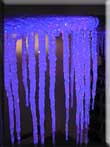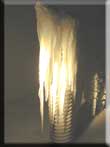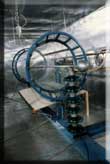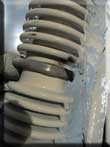| |
   |
|
|
|
   |
|
Research |
|
| |
|
|
|
The research program includes studies on mathematical modeling, as well as physical and numerical simulation of a number of fundamental phenomena related to the processes of ice accumulation and ice shedding from cables and conductors. Furthermore, it includes the initiation and development of electrical discharges in air gaps and on ice surfaces. The research program also comprises probabilistic studies on icing and aims to improve measurement methods of the various parameters associated with power line icing. The research program also deals with validation of mathematical models and simulation results using data obtained from laboratory experiments and natural icing sites. Moreover, the establishment of the Canada Research Chair, INGIVRE, in January 2003, has resulted in the opening of new fields of research dealing with the adhesion of ice and snow on exposed structures, and the prevention of ice and snow accumulation.
|
|
|
The following are the main research topics of CIGELE/INGIVRE
|
|
|
- Study of physical processes and laboratory simulations of icing precipitations
- Processing data from natural sites and probabilistic model elaboration
- Study and modeling of the process of ice and snow accretion on power network equipment,
including wind turbine blades
- Modeling of processes involved in ice and snow shedding from cables, conductors and wind turbine blades
- Study of electrical phenomena associated with flashover of ice- and snow-covered insulators
- Study of ice adhesion and ice accretion prevention by means of icephobic coatings and surface engineering
- Development of methods for de-icing and preventing ice and snow accretion
- Study of the dynamic behaviour of iced-and snow-covered cables
|
|
| |
These research topics are subdivided into more than twenty scientific projects manned by CIGELE students and researchers. |
|





